Art Collectors
What I Buy and Why: Entrepreneur Charles Jin on How He Built a World-Class Photography Collection
His considerable collection ranges from 20th-century masters to contemporary stars.
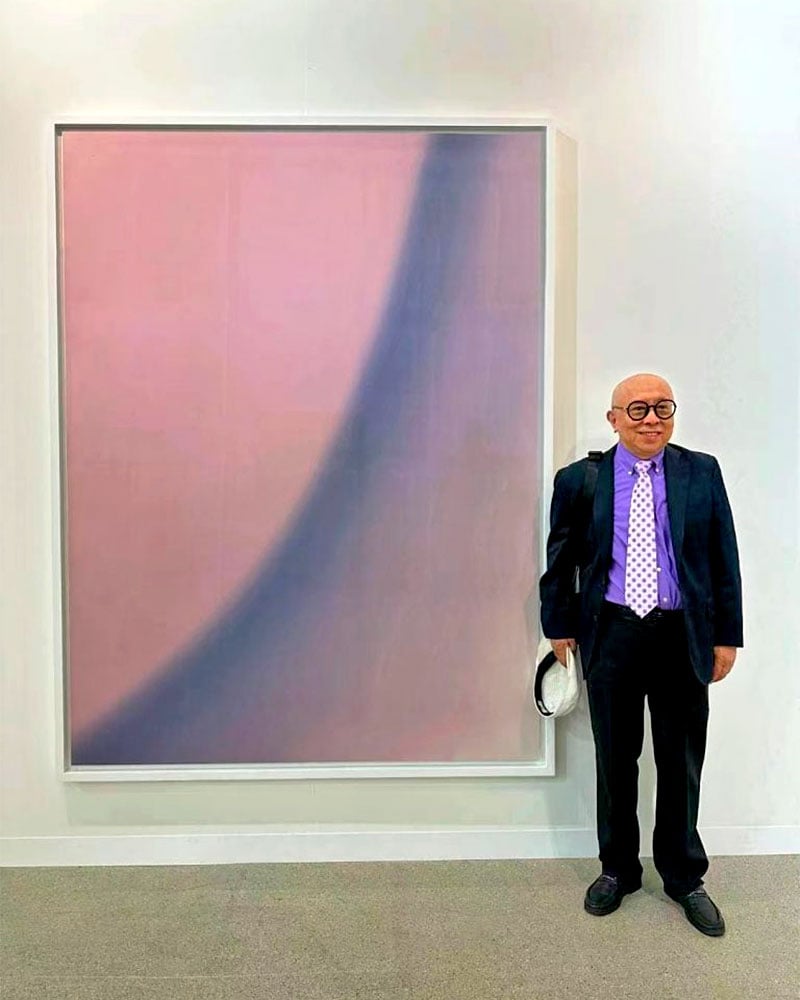
His considerable collection ranges from 20th-century masters to contemporary stars.

Cathy Fan

Charles Jin—a Shanghai native who now resides in Atlanta, Georgia—attributes his collecting journey to his formative years spent at the Maryland Institute College of Art (MICA). That’s where, in 1992, he became the first Chinese MFA graduate in photography to matriculate through an American art school. He then ventured into entrepreneurship, founding a leading manufacturing company in Georgia, but soon returned to photography with a newfound passion for collecting the art form.
Jin’s collection focuses on individual photographers, particularly 20th-century masters such as Edward Weston and Aaron Siskind. He owns around 200 vintage photographs by Harry Callahan, comprising a significant portion of his collection. His fascination with photographic greats is deeply rooted at the MICA, where his mentor Jack Wilgus was a former student of Callahan’s, and another of his instructors, William Larson, had been a student of Siskind’s. The artistic legacy passed down through these influential mentors played a pivotal role in shaping Jin’s views on photography.
Jin’s enthusiasm for photography encompasses contemporary names as well, including Wolfgang Tillmans, Cindy Sherman, Thomas Ruff, and Barbara Kruger. Jin counts about 90 signed Robert Mapplethorpe works in his collection and he could be the world’s largest individual collector of Sally Mann, with a trove of approximately 80 pieces from her iconic “Immediate Family” series. The sheer size of his collection would suffice to give each artist a solo show, a testament to his dedication to the art form.
Jin’s keen interest in photography extends beyond his private collection. In 2011, he began bringing a curator’s eye to his acquisitions, recombining the images to create thematic exhibitions such as “100 Vintage Prints” and “Sea Series,” captivating audiences across cities in China. In addition, Jin is now the owner of photo licensing company SIPA Press in France, the United States, and China.
We spoke with Charles Jin about his first purchase, the works he hopes to add to his collection this year, and his quest for promoting the art of photography.
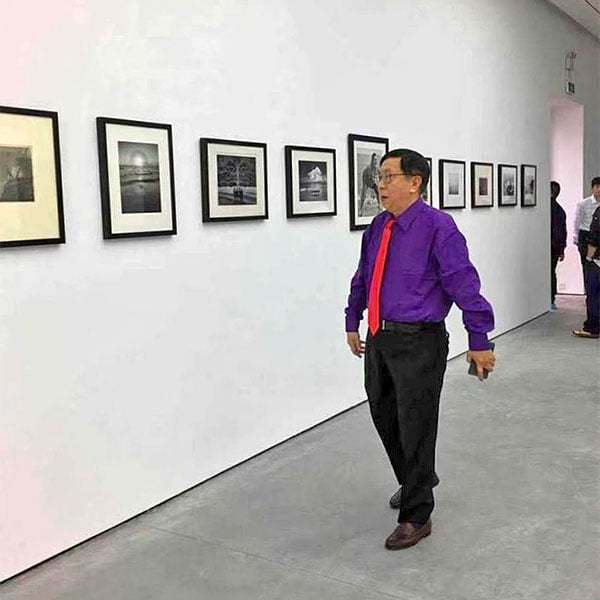
Charles Jin walks through an exhibition of his collection called “Sea Series” at Sanya Contemporary Museum in Hainan, 2017. Courtesy of Charles Jin.
Tell us about the exhibitions you’ve curated. How do collecting and curating influence each other?
I have found that there are a lot of connections among the photographs, so you can combine them naturally. I didn’t think too much about it at first, but in the end, it just became clear that a lot of it lends itself to a natural curatorial idea. I don’t have a huge amount of Cindy Sherman’s prints, only about 30 or so. As you know, all of her photos are self-portraits. You could curate a very good show with self-portraits as the subject matter.
There are some “close-ups”—that is, some masters took photos of hands, feet, and other parts of the human body, or even the back of the body, which can be curated to create a very good exhibition. There are also people who specialize in photographing mirrors, walls, tree roots, and so on, which can be singled out and combined to make a separate exhibition.
Your question is a good one, how does curatorial thinking influence my collection, and how does the collection react back to the curation? I think it only requires one condition, that you have a certain amount of collection—without quantity, it is impossible to have qualitative leaps, which bring endless possibilities.
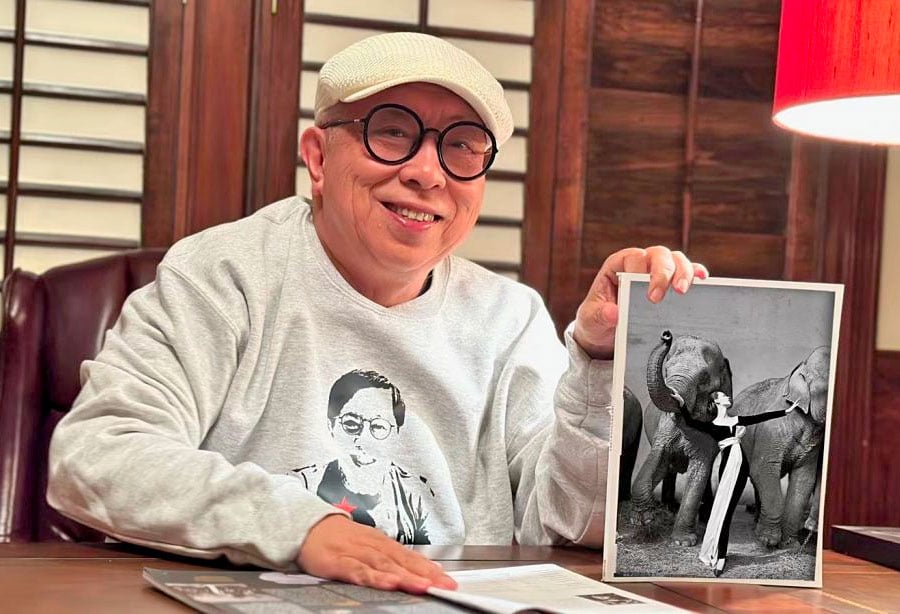
Charles Jin with Richard Avedon’s Dovima with Elephants, Evening Dress by Dior, Cirque d’hiver, Paris (1955). Courtesy of Charles Jin.
What was your first purchase?
It started at the end of 2005 but was more formalized in 2006 with the Association of International Photography Art Dealers (AIPAD), where I bought about 30 prints—mainly by Harry Callahan, but also some Edward Weston and Aaron Siskind. The first one I remember was Harry Callahan’s silhouette of his wife, with the person in black and the background in white, and that was one of his masterpieces.
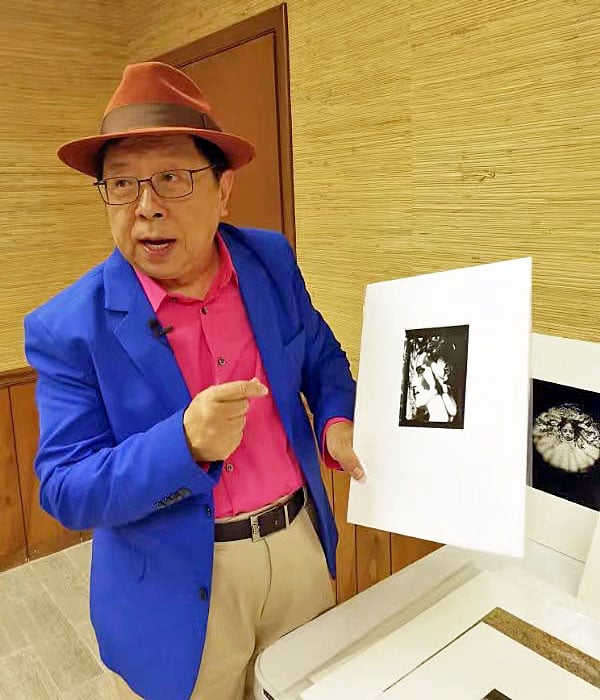
Charles Jin with a work by Harry Callahan. Courtesy of Charles Jin.
What was your most recent purchase?
Huge works by Wolfgang Tillmans and Thomas Ruff, as well as works by Barbara Kruger and Cindy Sherman.
Tell us about a favorite work in your collection.
There are quite a few. Self-portrait with cigarette (1980) by Robert Mapplethorpe and Identical twins, Roselle, N.J. 1966 by Diane Arbus.
Which works or artists are you hoping to add to your collection this year?
It should be Cindy Sherman as well as Wolfgang Tillmans. They are the main direction of my collecting these days.
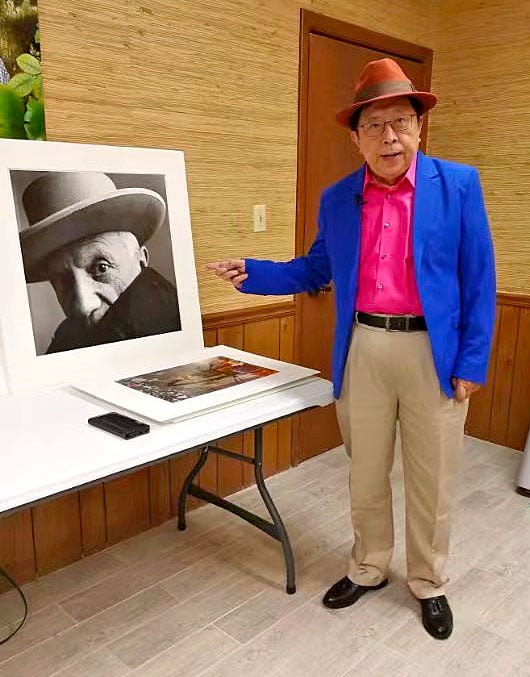
Charles Jin with Irving Penn’s Pablo Picasso at La Californie, Cannes (1957). Courtesy of Charles Jin.
What is the most valuable work of art that you own?
Many, such as the big three-meter wide Andreas Gursky, and a few vintage pieces including Edward Weston, Irving Penn, and Richard Avedon.
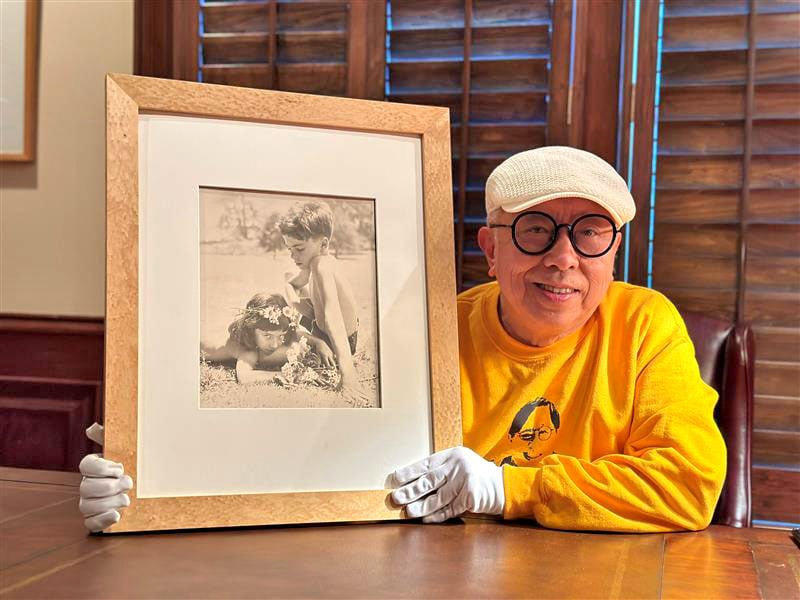
Charles Jin with Richard Avedon, Children with Flowers (ca. 1950s). Courtesy of Charles Jin.
Where do you buy art most frequently?
Mostly galleries like Hauser & Wirth, Pace, and Bruce Silverstein. For example, I recently bought a vintage Diane Arbus from a gallery.
Is there a work you regret purchasing?
No. Some of the work I bought has not been in very good condition, but I still want to keep them. I think it’s still not a bad decision.
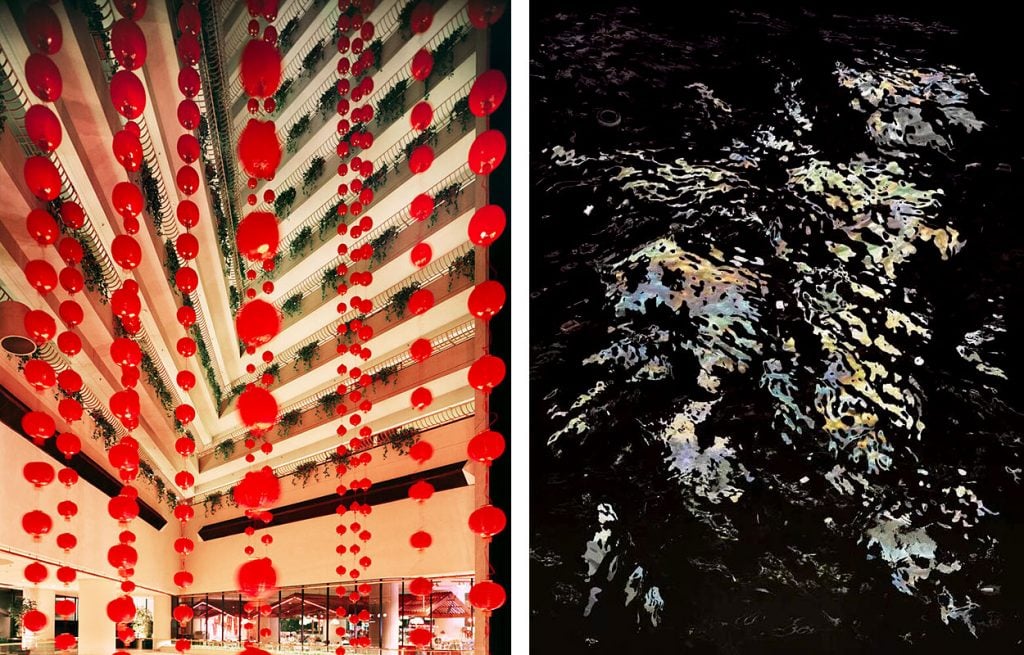
Singapore II (1997), Bangkok II (2011), both by Andreas Gursky. Courtesy of Charles Jin.
What work do you have hanging above your sofa? What about in your bathroom?
Actually, I do not have anything hanging on my sofa because my room is relatively big. And the bathroom, I don’t think so. I do not have anything in the bathroom because of the moisture. It’s going to harm the photograph.
What is the most impractical work of art you own?
Basically, I do not collect impractical work. When I was at school learning about the history of photography from 34 years ago, I knew exactly what I was looking for.
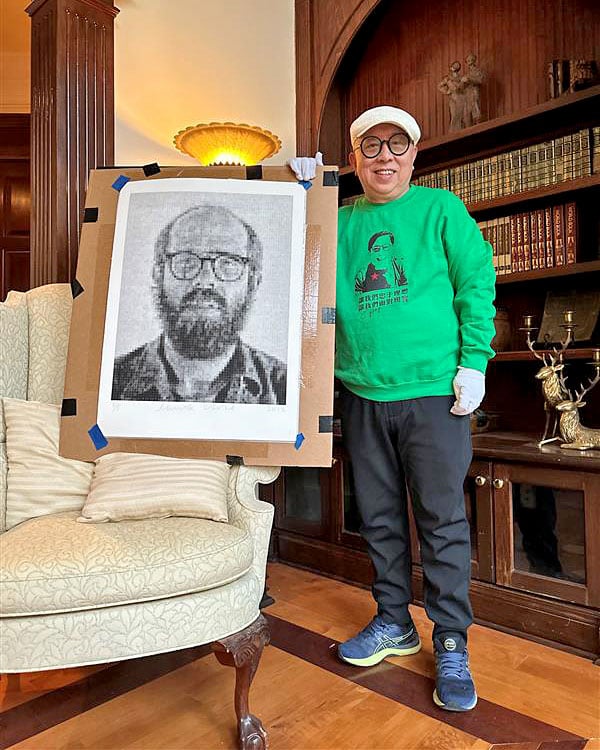
Charles Jin with a Chuck Close self-portrait. Courtesy of Charles Jin.
What work do you wish you had bought when you had the chance?
There was a lot that I missed. I forgot to bid on some sophisticated work, sometimes at Artnet.
If you could steal one work of art without getting caught, what would it be?
I don’t want to steal anything. If I have the money, I buy it. If I don’t have the budget, I just appreciate the work.